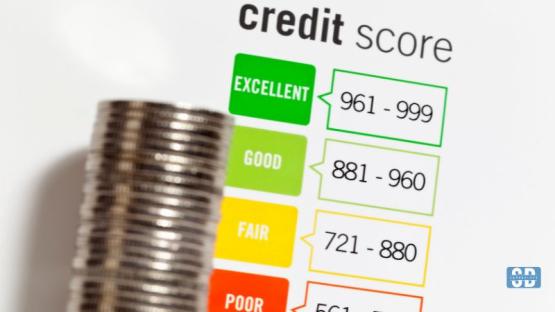Credit scores can be a critical factor when it comes to accessing financial opportunities. Whether it’s buying a home, securing a car loan, or even getting a job, your credit score can play a huge role in determining your financial future.
Unfortunately, for many people, particularly those in African-American and Latino communities, this score is often lower than for those in white or Asian communities. This racial disparity in credit scores has significant consequences, not only limiting access to financial opportunities but also perpetuating existing economic inequalities.
For those who face these disparities, securing financial stability can be an uphill battle. If you find yourself in a similar situation, a debt resolution company can help guide you through the process of improving your financial standing and working toward better credit. But beyond personal solutions, it’s important to understand the larger social and economic implications of these racial disparities and how they continue to contribute to inequality across generations.
Understanding Credit Scores and Their Role
To grasp the impact of racial disparities in credit scores, it’s essential to understand what credit scores are and how they work. Credit scores are numbers that lenders use to determine an individual’s creditworthinessâbasically, how likely someone is to pay back a loan or debt. These scores range from 300 to 850, with higher scores indicating better creditworthiness.
The three major credit bureausâEquifax, Experian, and TransUnionâcalculate these scores based on several factors, including payment history, credit utilization, length of credit history, new credit, and types of credit used. A higher score often leads to better loan terms, such as lower interest rates, while a lower score can mean higher interest rates or even denial of credit altogether.
However, the process that determines these scores is not always fair or equal. While it’s easy to assume that credit scores are purely a reflection of personal financial habits, research shows that there are deep systemic issues at play that disproportionately affect certain racial and ethnic groups.
Why Racial Disparities in Credit Scores Exist
Racial disparities in credit scores don’t simply come from differences in financial behavior. While financial habits can certainly play a role, there are broader, more structural factors at work. One major contributor is the racial wealth gap. In the United States, white households hold significantly more wealth than Black or Latino households. This difference in wealth often translates to access to better financial resources, which in turn leads to better credit scores.
For example, people in Black and Latino communities may not have the same opportunities to build wealth or access financial tools as those in white communities. Limited access to credit, fewer assets, and lower-income jobs can all contribute to lower credit scores. In many cases, these communities also face higher unemployment rates and less access to higher education, which can lead to a lack of financial stability and poor credit history.
Moreover, many people in these communities may have less access to traditional banking services, such as checking or savings accounts, or may be forced to rely on alternative financial products, like payday loans, which can negatively impact their credit. The lack of access to affordable credit-building tools can prevent them from improving their scores and create a cycle of economic disadvantage.
The Negative Impacts of Low Credit Scores
Racial disparities in credit scores have serious consequences that go far beyond simply not being able to get a loan. Lower credit scores limit people’s ability to take out mortgages, buy cars, or even rent an apartment. In some cases, employers even check credit scores as part of the hiring process. This means that a low score can affect an individual’s job prospects, creating a cycle of economic hardship.
For communities of color, the impact is even greater. Without access to fair loans or affordable housing, Black and Latino families often find themselves stuck in substandard living conditions or forced to rent in high-cost areas, further perpetuating economic inequality. This lack of financial mobility has long-term effects, preventing families from building wealth or passing assets down to future generations.
Additionally, lower credit scores often come with higher interest rates, which can make it more expensive to borrow money. For instance, a person with a low credit score who wants to buy a car might face a much higher interest rate than someone with a higher score. This means paying significantly more over the life of the loan, making it harder to save money or make future investments.
Efforts to Close the Gap: Solutions and Challenges
There are several ways to address the racial disparities in credit scores, but solving this issue requires systemic change and collaboration across industries. One step toward closing the gap is increasing access to financial education and resources for underserved communities. Teaching people how credit works, how to build a credit history, and how to avoid common pitfalls could help people of color improve their financial standing and credit scores over time.
Another solution involves expanding access to alternative credit-building tools, such as credit-building loans or programs that report rent payments to credit bureaus. Many people in Black and Latino communities don’t have traditional credit histories because they’ve been excluded from mainstream banking systems. Allowing rent payments, utility payments, and other regular bills to be reported to credit bureaus can help people who don’t have access to credit cards or loans establish a credit history.
While these solutions are promising, the problem is more complex than simply offering more opportunities for credit. Addressing the root causes of racial disparities, such as the racial wealth gap, discrimination in lending, and lack of access to high-paying jobs, will take concerted efforts from both the government and the private sector.
Taking Action: What You Can Do to Improve Your Credit
If you find yourself facing a low credit score, whether because of racial disparities or personal financial struggles, there are steps you can take to improve your situation . First and foremost, it’s important to stay on top of your finances. Pay bills on time, avoid maxing out credit cards, and keep an eye on your credit report to ensure there are no errors or fraudulent accounts listed.
Working with a debt resolution company can also help if you find yourself struggling with overwhelming debt. These companies can help you navigate debt repayment strategies and offer advice on how to manage your credit more effectively. While repairing credit takes time, having a plan and being proactive can set you on the right path toward better financial health.
Another step is to start building your credit through accessible means. If you don’t already have a credit card, consider applying for a secured credit card, which requires a deposit but can help establish a credit history. Additionally, if your rent payments aren’t being reported to the credit bureaus, ask your landlord if they’d be willing to include this information. Every little bit helps when it comes to building a better credit profile.
Final Thoughts: Bridging the Gap for a More Equitable Future
Racial disparities in credit scores are a significant issue that needs to be addressed. These disparities not only limit financial opportunities for Black and Latino communities but also perpetuate economic inequalities that affect generations to come. While individual actions, such as using debt resolution services or taking steps to build credit, are important, solving the broader issue requires systemic change.
From improving access to financial education to addressing the root causes of the racial wealth gap, there is much work to be done. But by continuing to raise awareness and push for meaningful change, we can work toward a future where credit scores are a reflection of individual financial habits rather than the result of structural inequality.








